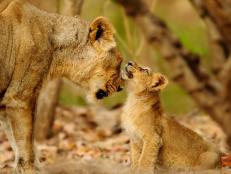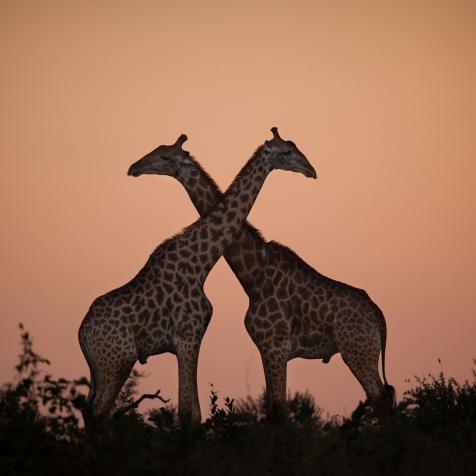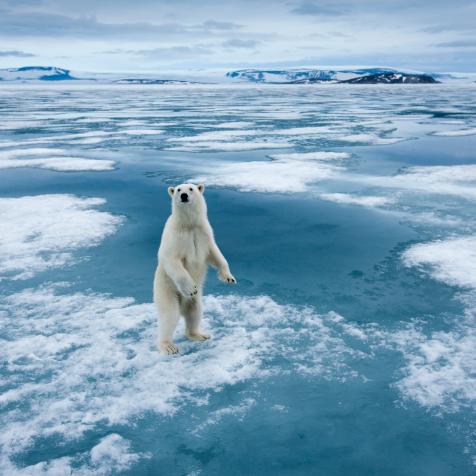
GettyImages/Santanu Nandy
Lion Queens of India
How Asiatic lionesses save their cubs, by playing the field.
Imagine opening your front door to see a wild, amply-maned and roaring lion traipsing down the sidewalk. The people of Rajkot city in Gujarat state had heard of the famous Gir National Park nearby, many even pay visits on weekends, but no one expected that a big Asiatic lion would actually show up at their doorstep like it did last year.
Photos
See All PhotosGir is the last place on earth where the Asiatic lion exists in the wild. The population – for the most part – is booming. The number of lions hit the 600-mark last year, a historic high since they were down to less than 50 at the start of the 19th century. Scientists who have been tracking these animals for decades believe such a success story is unique across carnivore populations worldwide (pretty much all of which are in decline). And the ways in which these last lions of Asia have adapted to the dramatically-changing landscape is unprecedented. The latest observations on their successful breeding put forth in a study published last month in Behavioral Ecology says their growing numbers may have a lot to do with the way lionesses view…monogamy.
African lions have set the standards for what is known and believed about lions worldwide because of a significant body of research – and their charismatic roles in films. Groups of males (who form coalitions of 2-7 individuals in Africa) usually monopolize lionesses who remain ‘faithful’ partners and mate with only the resident males of their respective prides. When the fathers or uncles of the cubs are away - or forced out of their realms, other males that take over the territories and rights to the females kill all cubs of the former kings—giving their own offspring a better shot at lording over the territory someday. The lionesses fight tooth and claw to defend their cubs, but the males almost always win.
Asian lionesses, however, have subtler and craftier means to deal with brutish males. Research spanning across several years has now provided evidence that Asiatic females mate with several males in their vicinity - unbeknownst to each other – confusing each male into believing that the cubs born subsequently are his. The newborns seem to have several proud and protective fathers, each with his own skewed belief of the cubs’ paternity.
The team of scientists – who are part of the longest-ever study on carnivores in Asia – has spent the last seven years following and observing lionesses from nine prides, since their polyandrous behavior was first suspected. What they ended up finding was that every lioness they observed was using this strategy and not a single cub was killed by a lion from a neighboring territory. “Largely, the conservation of the Asiatic lion has been far more successful than its founders could have envisioned - no one could have predicted how clever these lionesses can be. A strategy so different from their African cousins shows how adaptable and resilient these carnivores really are,” said Stotra Chakrabarti, a Senior Research Fellow and the lead author of the paper on female breeding behavior.
Now is the time for lionesses to pull out all their stops. While their numbers are on the rise, the Asiatic lion population also faces the severe threat of being wiped out completely – as they are restricted in a national park within Gujarat state and no other wild population around to give them the cushioning of genetic diversity. This leaves them open to higher chances of inbreeding depression and more vulnerable to diseases spreading. Just last year, twenty-four lions died when a canine distemper virus hit the park. Conservationists have been fighting for part of the population to be relocated to a different reserve in the neighboring state of Madhya Pradesh for years but until that happens, it’s up to the lion queens of India to rely on their genius.















































































